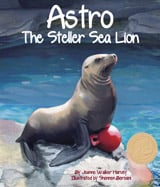Alignment to Standards for KY

| Grade | Number | Standard |
|---|---|---|
| 4 | SC-04-3.4.1a | compare the different structures and functions of plants and animals that contribute to the growth, survival and reproduction of the organisms; |
| 4 | SC-04-3.4.1b | make inferences about the relationship between structure and function in organisms. Each plant or animal has structures that serve different functions in growth, survival and reproduction. For example, humans have distinct body structures for walking |
| 4 | SC-04-3.4.3 | Students will compare a variety of life cycles of plants and animals in order to classify and make inferences about an organism. |
| 4 | SC-04-3.4.3a | Plants and animals have life cycles that include the beginning of life, growth and development, reproduction and death. The details of a life cycle are different for different organisms. |
| 4 | SC-04-3.4.3b | Models of organismsê life cycles should be used to classify and make inferences about an organism. |
| 4 | SC-04-4.6.1 | the basic relationships of plants and animals in an ecosystem (food chain). |
| 4 | SC-04-4.7.1a | patterns of evidence related to the survival and reproductive success of organisms in particular environments. |
| 4 | SC-04-4.7.2c | All organisms, including humans, cause changes in the environment where they live. Some of these changes are detrimental to the organism or to other organisms; other changes are beneficial |
| 4 | SC-4-I-S-6 | support or defend positions on real world environmental problems |
| 4 | SC-4-I-U-3 | people impact their environment in both beneficial and harmful ways. Some of these impacts can be predicted, while others cannot. |
| 4 | SC-4-UD-S-3 | Students will investigate and compare life cycles, especially reproductive characteristics (e.g., gestational periods, germination rates, number of offspring) and life expectancies of plants and animals to make inferences and/or draw conclusions about the |
| 4 | SC-4-UD-S-5 | questions about the diversity of living things using information from a variety of print and non-print sources |
| 4 | SC-4-UD-U-2 | characteristics of living things can be used to sort them into various groups: the characteristics chosen to establish the grouping depend on the reason for the grouping. |
| 4 | SC-4-UD-U-6 | Students will understand that all living things are produced from other living things. They grow and then eventually die. Before they die most living things create offspring, allowing their kind to continue. |
| Primary | SC-EP-3.4.3 | Students will describe the basic structures and related functions of plants and animals that contribute to growth, reproduction and survival. |
| Primary | SC-EP-3.4.3a | Each plant or animal has observable structures that serve different functions in growth, survival and reproduction. For example, humans have distinct body structures for walking, holding, seeing and talking. These observable structures should be explored |
| Primary | SC-EP-3.4.4 | Students will describe a variety of plant and animal life cycles to understand patterns of the growth, development, reproduction and death of an organism. Plants and animals have life cycles that include the beginning of life, growth and development, repr |
| Primary | SC-EP-4.7.1a | When the environment changes some plants and animals survive and reproduce and others die or move to new locations. Examples of environmental changes resulting in either increase or decrease in numbers of a particular organism should be explored in order |
| Primary | SC-P-BC-U-2 | understand that living things are found almost everywhere on our planet, but organisms living in one place may be different from those found somewhere else. |
| Primary | SC-P-I-S-4 | changes in an environment might affect plantsê and animalsê ability to survive |
| Primary | SC-P-I-S-5 | why some animals are endangered or extinct; why some areas are •protectedê) |
| Primary | SC-P-I-U-2 | when the environment changes, some plants and animals survive and reproduce, and others die or move to new locations. |
| Primary | SC-P-UD-S-3 | Students will investigate adaptations that enable animals and plants to grow, reproduce and survive (e.g., movements, body coverings, method of reproduction) |
| Primary | SC-P-UD-S-4 | Students will analyze structures of plants and animals to make inferences about the types of environments for which they are suited |
| Primary | SC-P-UD-S-6 | Students will analyze and compare a variety of plant and animal life cycles in order to uncover patterns of growth, development, reproduction and death of an organism |
| Primary | SC-P-UD-U-2 | plants and animals have features that help them live in different environments. |
| Primary | SC-P-UD-U-3 | some animals are alike in the way they look and in the things they do, and others are very different from one another. |
| Primary | SS-EP-1.3.2 | identify and give examples of good citizenship at home, at school and in the community (e.g., helping with chores, obeying rules, participating in community service projects such as recycling, conserving natural resources, donating food/supp |
| Primary | SS-EP-4.1.1 | Students will use geographic tools (e.g., maps, globes, mental maps, charts, graphs) to locate and describe familiar places at home, school and the community. |
| Primary | SS-EP-4.1.2 | use geographic tools to identify major landforms (e.g., continents, mountain ranges), bodies of water (e.g., oceans, major rivers) and natural resources on Earthês surface and use relative location. |
| Primary | SS-P,4&5-G-U-1 | use of geographic tools (e.g., maps, globes, charts, graphs) and mental maps help interpret information, understand and analyze patterns, spatial data and geographic issues. |